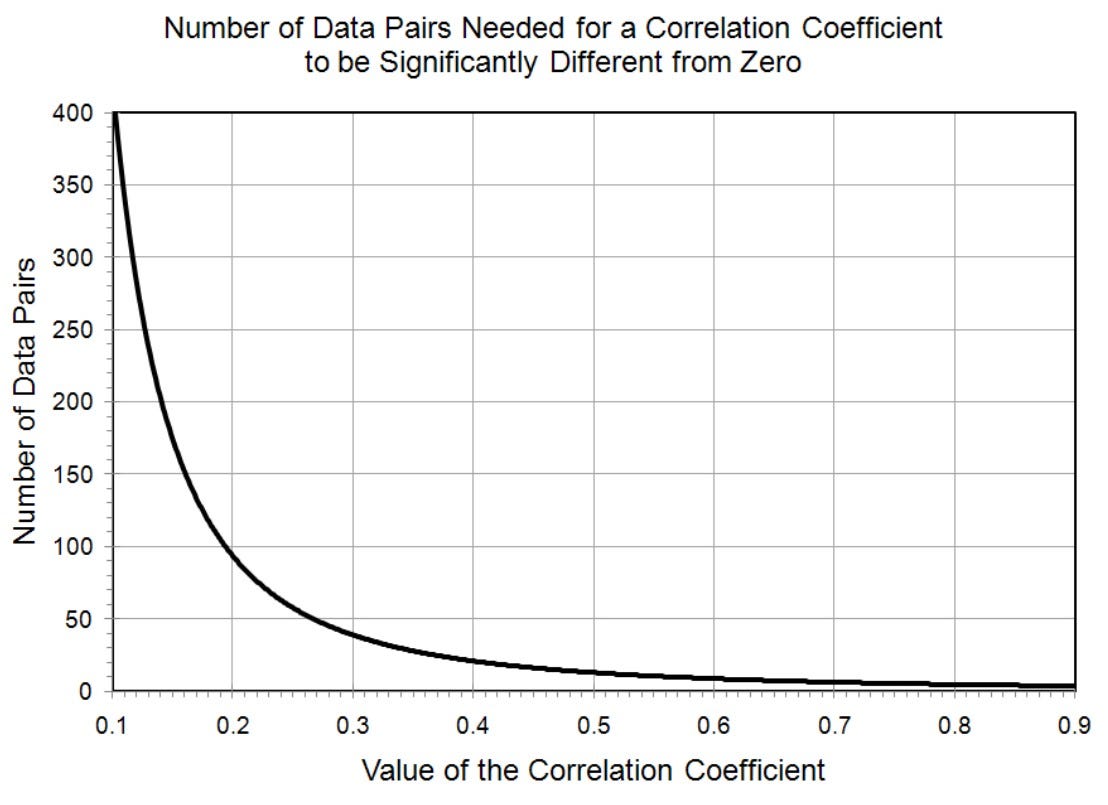1 . What’s a Good Correlation?
If you’ve ever seen a correlation coefficient, you’ve probably looked at the number and wondered, is that good? Is a correlation of -0.73 good but not a correlation of +0.58? Just what is a good correlation and what makes a correlation_ good_?
Types of Correlation
The strength of the relationship between two variables is usually expressed by the Pearson Product Moment correlation coefficient, denoted by r. Pearson correlation coefficients range in value from -1.0 to +1.0, where:
- -1.0 represents a perfect correlation in which all measured points fall on a line having a negative slope
- 0.0 represents absolutely no linear relationship between the variables
- +1.0 represents a perfect correlation of points on a line having a positive slope.
If you have a dataset with more than one variable, you’ll want to look at correlation coefficients. There are many types.
The Pearson correlation coefficient is used when both variables are measured on a continuous (i.e., interval or ratio) scale. There are several variations of the Pearson Product correlation coefficients. The multiple correlation coefficient, denoted by R, indicates the strength of the relationship between a dependent variable and two or more independent variables. The partial correlation coefficient indicates the strength of the relationship between a dependent variable and one or more independent variables with the effects of other independent variables held constant. The adjusted or _shrunken correlation coefficient _indicates the strength of a relationship between variables after correcting for the number of variables and the number of data points. There are also correlation coefficients for variables measured on noncontinuous scales. The Spearman R, for instance, is computed from ordinal-scale ranks.
#artificial-intelligence #machine-learning #correlation #data-science #statistics
